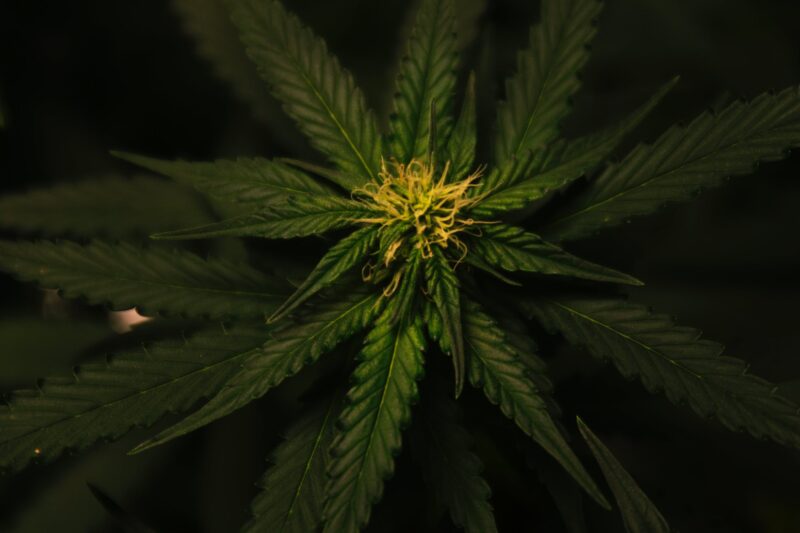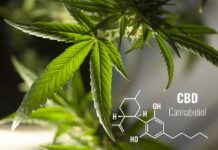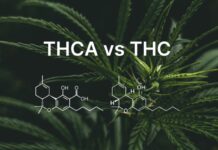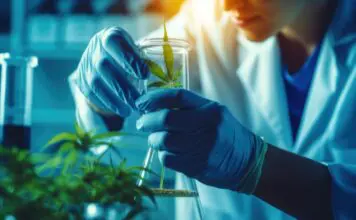The presence of Cannabinoid receptors is more than any other receptors in the human body; in other words, cannabinoid receptors are the most common type of receptor in the brain. In addition to humans, cannabinoid receptors are found in mammals, fish, birds, and reptiles. There are two main types of cannabinoid receptors – CB1 and CB2 (CB1 and CB2). CB1 receptors are mainly located in the brain; CB2 receptors are primarily located in the immune system and the spleen. According to the study, CB2 receptors are responsible for the body’s primary immune responses. Cannabinoids contained in hemp plants affect essential functions of the human body by their action on the CB1 and CB2 receptors.
CBD and THC plant cannabinoids as essential cannabinoids. They are found mainly in resin that protects hemp flowers. Today, cannabis is obtained from 85 different cannabinoids, among which the most studied are CBD and THC.
CBD- It is not psychoactive and it does not change human consciousness. Recent studies suggest that it inhibits consciousness changes as a result of cannabis use. It does not directly affect CB1 receptors; it inhibits the activation of these receptors by other substances, thus “protecting” them. CBD prevents cramps, bloating, anxiety, and nausea.
CBD also slows down the growth of cancer cells. It has a more significant effect on CBD receptors than CB1 receptors, which explains its impact on the human immune system. This is most abundant among cannabis cultivars with low THC content. For more information, you can visit CBDcity.com.

THC – tetrahydrocannabinol is the primary psychoactive ingredient in THC cannabis. THC mimics the function of the human body-produced hormone anandamide, a neurotransmitter. The effect of cannabis use is because THC binds to CB1 receptors in the brain. THC relieves pain, inflammation of nerves, and promotes nerve development. Studies have also shown its ability to inhibit the growth of cancer cells. THC affects the nearly identical CB1 and CB2 receptors.
Chinese scientists at Shanghai University of Technology synthesized more powerful analogs of tetrahydrocannabinol, a psychotropic substance in hemp. Using these substances in their research, biochemists have determined the mechanisms of marijuana’s effect on human brain cells. The results are published in the journal “Nature”.

It is known that the so-called endocannabinoid system controls the activity of a person’s central nervous system. Neurons release specific substances that affect signal transmission between cells. The mediators are specialized protein molecules – cannabinoid receptors. These compounds belong to a group of GPCRs, G-protein-coupled receptors (or serines).
The GPCR acts as a trigger for many intracellular signal transduction processes. They are represented by seven protein helicopters, or domains (usually Roman numerals I, II, III, etc.), which are immersed in the cell membrane and “peek” from either side. Their main feature is the ability to switch from inactive to active (and vice versa), in which G-proteins attached to them from inside the cell also become active. The latter disconnects from the GPCR and transmits the signal further.
However, many substances can affect GPCR. They bind to the receptor (i.e., are the ligand of the receptor) externally and affect its activation. The agonist increases the balance between passive and active form in a shift, increasing signal transmission. In this case, both one hundred percent and partial activation are possible. Reverse agonists do the opposite and interfere with both antagonists. Sometimes this picture is greatly simplified, including inverted agonists in a group of antagonists. In this case, it is assumed that agonists “turn on” the receptor, and antagonists inhibit it.

Today CBD cannabinoids are not just used in medicines but are relatively in huge demand for other products. Governments around the world have different rules and policies regarding the use of these. The major reason behind imposing strict actions against those is to stop the misuse of it because of the psychoactive effect it causes. For example, the United States of America has legalized CBD and CBD infused products, but the rules are in constant flux. So to avoid the problem many people prefer buying online. The legality of these products is directly dependent on the vendor from which people buy. Because of the huge demand, there are lots of fraud online sellers who try to cash on the opportunity to cheat people in the name of original CBD and CBD infused products.
These are used for various reasons, but the primary reasons are related to health issues like stress, depression, digestion problem, so people who do not have access to these products tend to go online. Because of the tremendous benefits of the CBD infused products they are always huge in demand.

Not many of you know that in the past few years, the demand for these has increased significantly. The only problem is that CBD is misunderstood because critics always confuse it with THC, which makes marijuana psychoactive. But these oils have no psychoactive property (the feeling of being high). CBD infused products are known to enhance mental and emotional health along with physical health. You can surf the internet to know about the numerous mental and physical health benefits of CBD products.
As said above, these are not easily available hence buying online is the most convenient way for people who want to benefit from CBD. The primary reason is the ease of access people experience when they buy CBD products online. But it is of utmost importance that one must only order from online stores who abide by all safety standards and health regulations. Besides this, buying CBD online gives you access to a huge variety of products that can be used for different purposes. Online stores do not just have a wide variety, but they also save people from driving an hour or more to the nearest CBD shop. Buying CBD and CBD infused products online is indeed a better way to get genuine quality.












